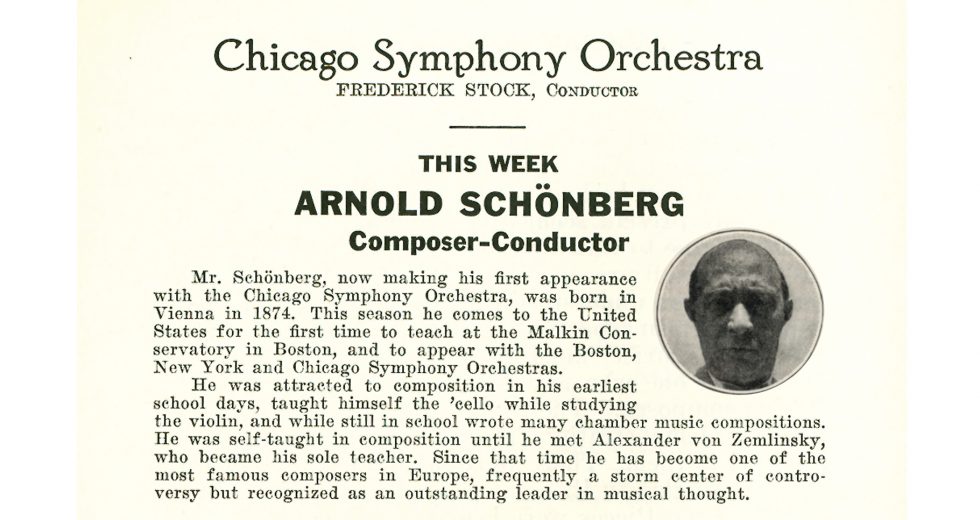
Arnold Schoenberg composed his Five Pieces for Orchestra in 1909, and they were first performed at a Proms concert in London on September 3, 1912, with Sir Henry Wood conducting. Frederick Stock and the Chicago Symphony Orchestra introduced the work to the U.S. on October 31, 1913.
Schoenberg, in a letter to Richard Strauss in July 1909, admitted that the Five Pieces are “absolutely not symphonic, completely the opposite, no architecture, no structure. Only a kaleidoscopic, uninterrupted changing of colors, rhythms, and moods.”
On February 8 and 9, 1934, a few months after moving to the United States, Arnold Schoenberg appeared as guest conductor, leading the Orchestra in his Transfigured Night, Five Pieces for Orchestra, and his orchestration of Bach’s Prelude and Fugue in E-flat major (Saint Anne). In the Chicago Daily News, Eugene Stinson described the composer as “the most eminent, the most obscure, the most debated, and the most explained of any figure in twentieth-century art” and the Five Pieces as an “extraordinarily intellectual [yet] essentially subjective and emotional expression of himself in music.”
Needless to say, Schoenberg’s Five Pieces were difficult for Chicago audiences not only at the U.S. premiere but also under the composer’s baton. In the Chicago American, Herman Devries described them as “grim and repellent studies in dissonance, which, despite their amazing orchestration, do not invite repeated hearing.” Edward Moore in the Chicago Tribune admitted that “they did not always make sense to me. There was no particular logic about their beginning or ending. They just ran along for a time and then stopped. But almost continuously they were saying something pleasant. And there is no question but that Mr. Schoenberg has an unfailing sense of what makes attractive orchestral color. It may be winsome, it may be grotesque, but he never misses his effect.”
This article also appears here.
